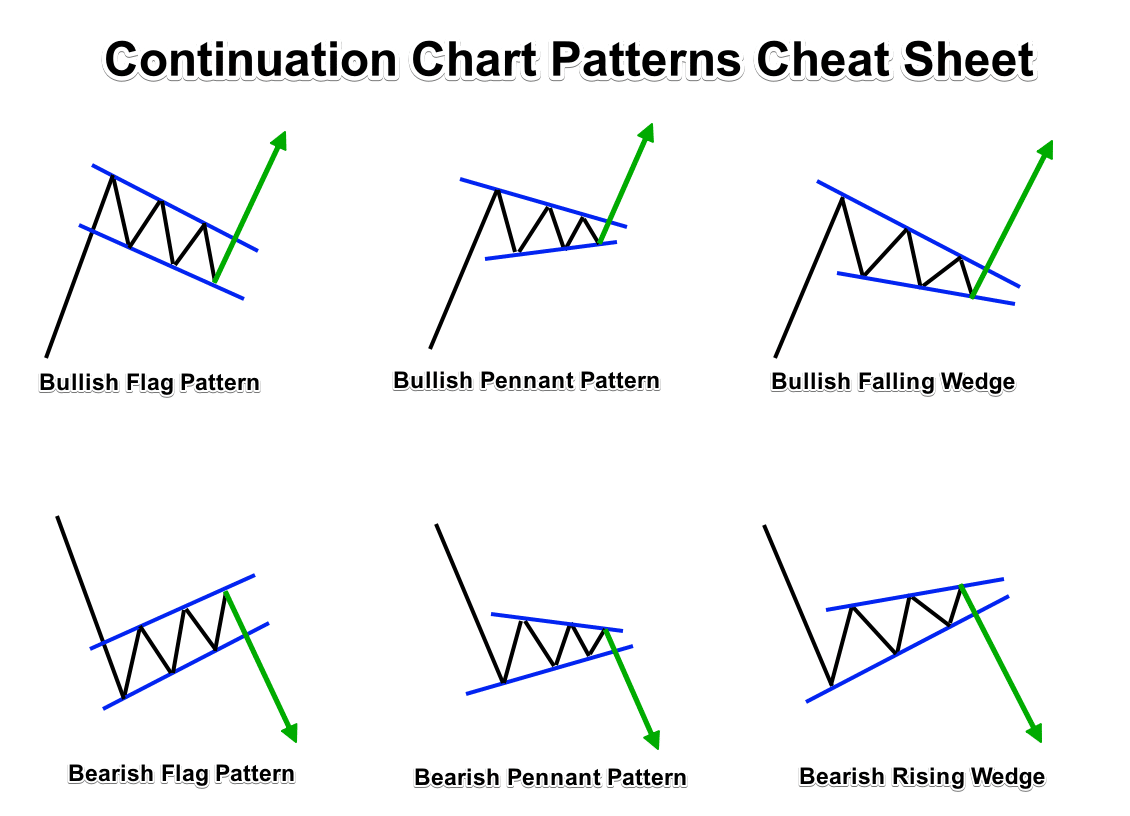Chart patterns forex pdf
When reading forex charts, it is important to be aware of some of the most popular forex chart patterns and trends you might observe and what they might indicate in terms of future prices.
Forex chart patterns
These signals include reversal and continuation trends:. After this level has been reached, the price tends to dip slightly before returning back up to the top level again. If it bounces back down again, this is known as a double top. After reaching the second top, it is likely that the price will dip again. This bullish forex chart pattern is usually seen following a downtrend — the price will drop down to a new low, increase slightly and then dip back down to the lowest point.
Use In Day Trading
After reaching the second low point, it is likely that the price will increase again. After the second peak, it is likely that the price will fall. In contrast to the standard head and shoulders pattern, the inverse version is bullish. Look out for an initial dip, a slight increase followed by an even lower dip, another slight increase and finally a further dip that is not as low as the middle one. After the second dip, it is likely that the price will rise again. Sometimes called the ascending wedge, this bearish pattern often forms during an uptrend and can signify either a reversal or continuation trend.
Look out for the price consolidating between rising sloping support and resistance lines. If this pattern shows just after an uptrend it usually indicates a reversal pattern, so you can expect the price to start dropping again. During a continuation trend formation, you might spot one of the following patterns:.

Just like the rising wedge, the falling wedge can indicate either a reversal or continuation trend. If it forms at the end of a downtrend, this bullish pattern indicates that an uptrend can be predicted. If it forms during an uptrend, the price can be expected to continue increasing.
Rectangle patterns appear when the support and resistance levels of the price are parallel. A bearish rectangle appears when the price increases for a period during a downtrend. If you spot this pattern, you can expect that the price will continue to fall.
Patterns For Day Trading - Best Chart And Candlestick Signals For Trades
A bullish rectangle appears following an uptrend. If you spot this pattern, you can expect the price to continue going up. Following a significant upward or downward move in price, there is usually a short pause before further movement in the same direction. As a result, the price tends to consolidate. In a forex chart, this can be identified by a small symmetrical triangle shape called a pennant.
Bearish pennants form during vertical, steep downturns. Following a sudden drop in price, some traders will choose to close their positions whereas others opt to join the trend, meaning that the price consolidates for a short time. Once enough sellers have moved into the trade, the price drops below the bottom point of the pennant and it can be expected to continue moving down. Bullish pennant patterns are the opposite of bearish ones, so they appear after a sharp increase in price.
This uptrend can be expected to continue after a brief period of consolidation.
When a triangle pattern appears, it can be more difficult to predict what will happen next. There are three different types of triangle chart formation to look out for:.
Trading Patterns
For any new trader, forex charts are likely to seem overwhelming when you first start looking at them. One of the best things you can do is set aside some time to gain a good understanding of how the price and time axis can be used to help gather historical data and learn how this can be used to predict what might happen next.
Many trading platforms offer the option to open a demo account which will allow you to trade risk-free before putting any of your money at risk. This is a good way to boost your overall trading knowledge and give yourself time to become familiar with forex charts, interpret patterns and act upon any trends that you identify. WikiJob does not provide tax, investment or financial services and advice. Included in this type are the most common patterns [2] which have been introduced to chartists for more than a hundred years.
Below is a list of the most commonly used traditional chart patterns:. Harmonic Pattern [4] utilizes the recognition of specific structures that possess distinct and consecutive Fibonacci ratio alignments that quantify and validate harmonic patterns. These patterns calculate the Fibonacci aspects of these price structures to identify highly probable reversal points in the financial markets.
This methodology assumes that harmonic patterns or cycles, like many patterns and cycles in life, continually repeat. The key is to identify these patterns and to enter or to exit a position based upon a high degree of probability that the same historic price action will occur. In technical analysis , a candlestick pattern is a movement in prices shown graphically on a candlestick chart that some believe can predict a particular market movement. The recognition of the pattern is subjective and programs that are used for charting have to rely on predefined rules to match the pattern.
There are 42 recognized patterns that can be split into simple and complex patterns. Steve Nison is the one who introduced candlestick pattern from Japan to the West.
- moving averages strategy forex.
- POPULAR REVIEWS.
- Forex Trading Chart Patterns - Reading Forex Chart Patterns Like A Professional Trader;
From Wikipedia, the free encyclopedia. This article needs additional citations for verification. Please help improve this article by adding citations to reliable sources.
- forex 2.0.
- andrew lockwood forex trader.
- fsb binary options?
Unsourced material may be challenged and removed. Retrieved